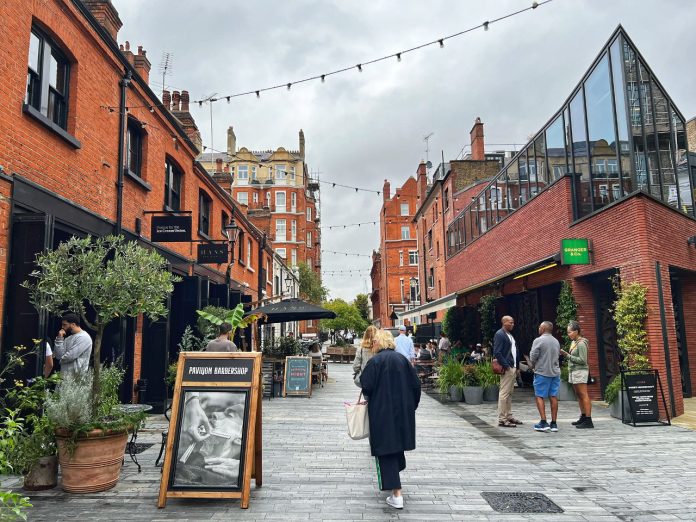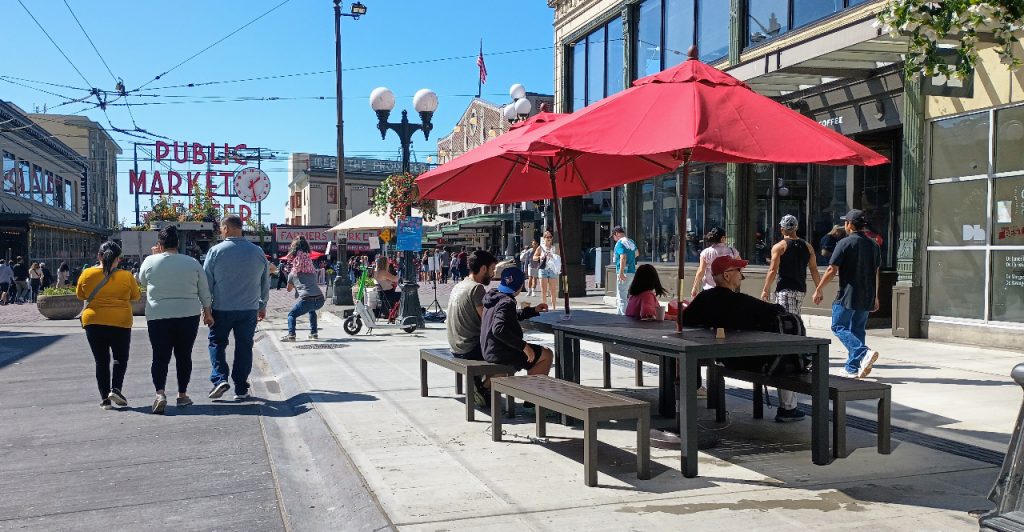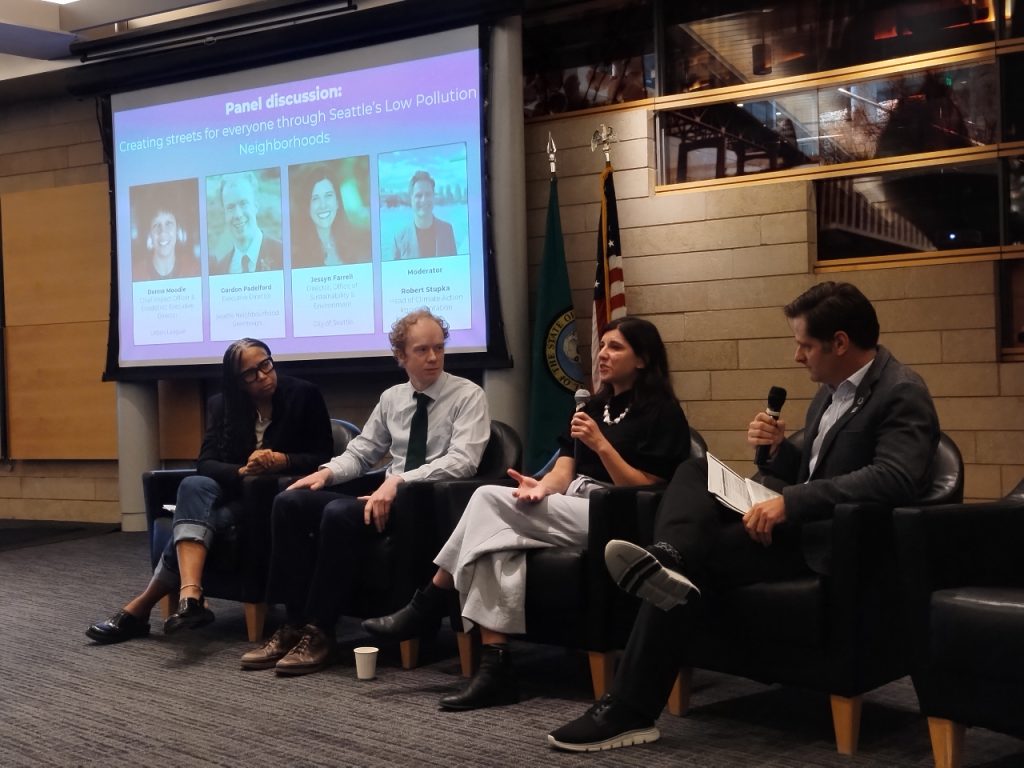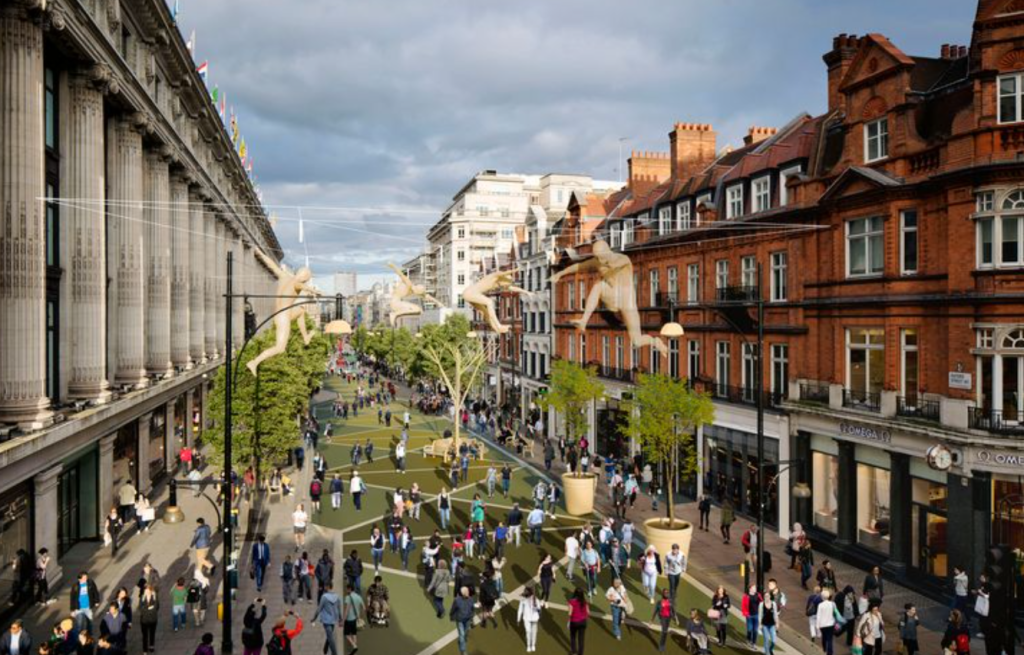
Pavilion Road in London’s Chelsea borough used to be a nondescript road, barely wide enough for two drivers to pass each other and almost no space for pedestrians. The primary use for the street was storing cars, and it wasn’t a space where very many people would want to linger. That was 10 years ago — today Pavilion Road is one of London’s most popular public places and in 2023 was shortlisted for the “Britain’s Best Street” award, thanks to a redevelopment plan which was fully realized after the street was pedestrianized, a move that was approved in 2021.
As a member of C40 Cities, London was one of 12 cities around the world to make a bold commitment in 2017 to transform a “major area” of each city to zero-emission zones by 2030, accelerating progress toward becoming “walkable cities that put people first.” The Pavilion Road transformation was squarely in line with that vision, and it represents just one place among many where the City of London has made big strides since signing onto the Green and Healthy Streets accelerator, headlined by the expansion of the city’s congestion pricing zone, which decongested traffic in the center city while funding transit improvements.
“As mayors of some of the world’s great cities, we are committed to transforming them into greener, healthier, and more prosperous places to live,” read an open letter signed by all 12 mayors announcing the commitment. “Our streets must be safe and accessible for everybody and our air must be clean and free from harmful emissions. This will improve the quality of life for all citizens, and help tackle the global threat of climate change.”
Signing on along with London in 2017 was Seattle, under interim Mayor Tim Burgess, who led the City for 71 days following the resignation of Mayor Ed Murray. Burgess has served as Mayor Bruce Harrell’s deputy since 2022, but Seattle, in contrast with London and many of the other cities to sign onto the Green and Healthy Streets accelerator, has much less progress to show since then. Mayor Jenny Durkan briefly flirted with downtown cordon congestion pricing, but ultimately backed off after one study.
In late 2022, Harrell made a commitment to implement three “low-pollution neighborhoods” across Seattle by 2028, a timeline that seems to discount the issue’s urgency. Harrell’s pledge came in an executive order focused on transportation electrification rather than pedestrianization, suggesting a focus on electrifying vehicles rather than more transformational change. While other C40 Cities have been pedestrianizing entire districts, implementing congestion cordons, and rapidly expanding bike networks, Seattle has pedestrianized a one-half block stretch of Pike Street near Pike Place Market that still only exists as a pilot.

Just last week, the City of Seattle hosted city planners and advocates from around the country for a C40 Cities event at city hall titled “Pathways to zero-emission streets” — framed as an opportunity to “discuss the opportunities and challenges of transforming city streets across North America and around the world.”
While Mayor Bruce Harrell buzzed into the event at its outstart to give a set of short, mostly off-the-cuff remarks, it was Jessyn Farrell, Director of the Office of Sustainability and the Environment (OSE), who was the Harrell Administration’s main avatar that day. OSE, along with the Seattle Department of Transportation, has been the primary agency tasked with moving the transportation electrification strategy forward, and with it the low-pollution neighborhood concept.

In response to a question from The Urbanist during the Q&A portion of the event, Farrell gave an update on the low-pollution neighborhood program, telling attendees that significant work was happening behind the scenes, while declining to offer specifics at this juncture.
“There’s a ton of work that’s going on about behind the scenes right now around putting together the funding,” Farrell said. “And we’re in this moment where it’s the best of times in climate and it’s the worst of times because it’s happening quickly, but there is federal and state funding in place. So, we are doing a whole bunch of work to assess where are the right places to do this, put the funding together to be able to launch these things and ask the hard questions around displacement and gentrification and health strategies. So, we’re in a place where we’re in deep implementation, and it’s exciting, and there will be more.”
Some of that behind-the-scenes work has been briefly visible. Last summer, the City of Seattle was awarded $1.2 million in funding from the US Department of Transportation to plan for the low-pollution neighborhoods that have been promised since 2017. In an update provided to the Seattle Planning Commission this past spring, OSE and SDOT staff noted that “community conversations” had just been getting underway and spelled out a timeline to deliver a plan to implement these low-pollution neighborhoods to Mayor Harrell’s Office by late 2025. There’s no telling when the public would actually be able to see it, given the pattern of delay among prominent Harrell initiatives, from sitting on a long-awaited reform of the design review program for a full year to repeated delays to finalize Seattle’s once-a-decade growth plan, putting Seattle at serious risk of missing state deadlines to permit more housing.
In a follow-up, Farrell was asked how the City is identifying which neighborhoods will be selected for the pilot, and couldn’t provide any additional details. “We are still doing that assessment of where we will be launching those,” she said. “That’s why there’s some lead time — 2028 — so that we can really do the right community engagement and again, do the work around lining up funding so that they’re actually a meaningful investment.”
The same day as Seattle’s C40 event, London Mayor Sadiq Khan announced a plan for the complete pedestrianization of Oxford Street, the city’s busiest shopping corridor. Khan’s announcement reflected many of the same issues that are plaguing Seattle’s downtown, including a decline in foot traffic since the pandemic and an overall trend away from downtown shopping toward “online retailers and out-of-town shopping centres.” London’s latest move would have felt right at home in Seattle’s Downtown Activation Plan, but for the fact that most of the long-term activation strategies in Seattle’s plan remain stuck in low gear.

In citing a need to be methodical to ensure impacts of proposed changes are equitable, city officials raise a real issue when it comes to past transportation investments. But the cost of delay is real as well. In supporting the $1.2 million USDOT grant, the Duwamish River Community Coalition (DRCC) cited the impact that Seattle’s transportation system as it exists today has on the residents in the Duwamish Valley, a likely area for at least one of the planned low-pollution neighborhoods.
“DRCC has seen firsthand that Seattle has real health disparities related to air quality and environmental health disparities,” their letter noted. “Residents of the Duwamish Valley are disproportionately exposed to contamination compared to wealthier communities in the City of Seattle. People who live in Georgetown and South Park have some of the highest health differences in the City of Seattle and therefore are overburdened by air pollution.”
So far there are no signs that the low-pollution neighborhood pilot will be able to break free of the years of Seattle Process that drag down other projects in the city, but the real question is whether the City is able to get to the finish line at all.
Ryan Packer has been writing for The Urbanist since 2015, and currently reports full-time as Contributing Editor. Their beats are transportation, land use, public space, traffic safety, and obscure community meetings. Packer has also reported for other regional outlets including Capitol Hill Seattle, BikePortland, Seattle Met, and PubliCola. They live in the Capitol Hill neighborhood of Seattle.


